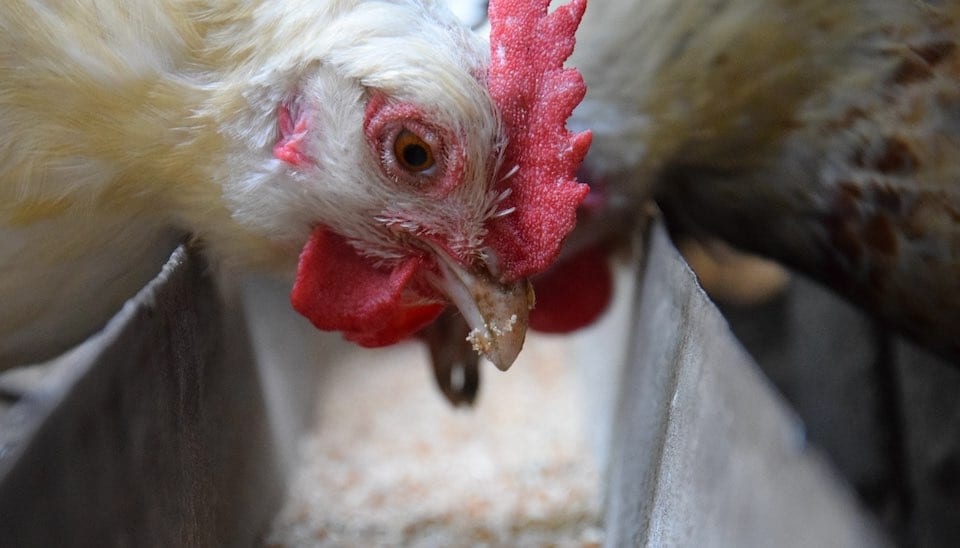What Is a Broody Hen and How Can You Help?
If you’re a backyard chicken keeper in New Zealand, understanding what a broody hen is and how to manage it is essential.
A broody hen is one that has decided she wants to hatch eggs and raise chicks.
This natural behaviour can be beneficial if you want to expand your flock, but it can also lead to challenges if left unchecked.
Here’s what you need to know about identifying and managing broodiness in your chickens.
A Surprising Discovery: The Case of the "Missing" Hen
One of our customers recently shared an interesting story with us.
She had lost one of her hens, which had seemingly disappeared without a trace. After thoroughly checking the fences and ensuring there was no way for the hen to escape, she came to the conclusion that the bird had been taken by a hawk. Determined to prevent further losses, she came into our store looking for bird netting to predator-proof her chicken run.
After installing the extra protection, she returned to the store with an unexpected update.
The "missing" hen had reappeared, frantically running down the yard, scattering other birds aside, and making a beeline for the chicken feeder. She ate in a frenzy and then disappeared again just as quickly.
This was no hallucination—the hen had gone broody and was hiding away, only emerging for quick bites to eat.
What Is a Broody Hen?
A broody hen is one that has entered a hormonal state where she feels the need to sit on eggs and hatch them. This is a natural instinct for hens, particularly those that are heavier breeds or those that lay brown eggs.
The onset of broodiness can be triggered by various factors, including warm weather, the presence of eggs in the nest, or even seeing another hen sitting on eggs.
Signs of a Broody Hen
Spotting a broody hen early can help you manage her behaviour before it becomes a problem.
Here are some common signs:
- Decreased Egg Production: If you notice fewer eggs in the nesting boxes, it could be because your hen is laying her eggs elsewhere, often in a secluded spot that feels more private to her.
- Spending Extended Time in the Nesting Box: A broody hen will often spend long periods sitting in the nesting box or another secluded area. If she starts sleeping in the nest rather than roosting with the rest of the flock, it’s a strong sign that she’s gone broody.
- Building Nests in Hidden Spots: Broody hens may abandon the nesting box entirely in favour of a more hidden location. They’ll seek out dark, quiet places—under bushes, in tall grass, or even behind or beneath the chicken coop if there’s access.
- Aggressive or Protective Behaviour: A broody hen may become more aggressive or protective, especially when approached while she’s sitting on her nest. She might puff up her feathers, cluck loudly, or even peck at you if you try to move her.
Why Do Some Hens Go Broody More Often?
Broodiness isn’t linked to a particular breed more than another, but some types of chickens are more prone to it than others.
For instance, white egg-laying breeds are less likely to go broody, while heavier brown egg layers are more susceptible. This is especially true in New Zealand, where many backyard chicken keepers prefer larger breeds due to the colder climate, particularly in the South Island.
The three main factors that contribute to broodiness are:
- Environment: Warm weather, the presence of eggs, and the sight of other broody hens can trigger this behaviour.
- Breed Characteristics: Larger, heavier breeds tend to go broody more often, especially those that lay brown eggs.
- Hormones: The hen’s natural reproductive hormones play a significant role in triggering broodiness.
Are Broody Chickens a Problem?
If you’re looking to expand your flock with some chicks, a broody hen can be a great asset. However, there are also some downsides to having broody chickens in your coop:
- Decreased Egg Production: When a hen goes broody, she stops laying eggs. Even worse, broodiness can spread to other hens in the flock, causing a noticeable drop in egg production. Once one hen starts sitting, it’s not uncommon for others to follow suit.
- Egg Stealing: Broody hens may start stealing eggs from other hens to sit on, sometimes even scaring the other hens out of the nest boxes. This can lead to eggs being laid in less ideal locations around the coop or yard.
- Health Risks: A broody hen’s health can be compromised due to her refusal to eat, drink, or take care of herself properly. She may sit on the nest for extended periods, neglecting to dust bathe, and losing weight quickly. This can lead to serious health issues if not managed properly.
- Unsuccessful Motherhood: Not all broody hens make good mothers. Some might abandon the nest before the 21-day incubation period is over, while others might accidentally harm their chicks. If you’re planning to let a hen sit, it’s important to choose one that’s more likely to see it through.
If you decide that you don’t want to hatch chicks, it’s best to "break" the broody hen as soon as possible.
This involves encouraging her to stop being broody and return to her normal behaviour, which is better for her health and helps keep egg production steady.
What to Do when Hens Go Broody
If you want to expand your flock with some chicks, having a broody hen is excellent news.
However, if you don't wish to have chicks you shall need to 'break' your broody hen, this means to stop her being broody as soon as possible. But if not, it is best to “break” your broody hen. The mission should you choose to accept it is to stop her from being broody, as soon as possible.
Stop a broody hen
The less time a hen has spent sitting, the easier it is to convince her to give up the nest and return to normal flock life.
It is better for the chicken’s health, prevents the broodiness spreading, and also means egg production generally returns to normal. Breaking broody hens - it's not as brutal as it sounds. There are loads of ways to break a broody hen, and everybody has a favourite.
The first step in any method, of course, is to take away the eggs!
The favourite way of most chicken keepers that I know is the BBB - the broody-breaking box.
Here are some methods that backyard chicken keepers in New Zealand commonly use:
The boomerang method
- Remove the hen from the nest multiple times daily. This technique is highly effective in the early stages.
- Use bribes or treats such as dried mealworms to help keep the chicken of the nest.
- You can also move the hen out of the nesting box and onto the roosts at night. Usually once moved they are too timid to make their way back in the dark.
The lock-out method
- In the morning after eggs are laid, lock the hens out of the coop for the day. Make sure they have adequate food, water, shade as well as protection from predators.
- Blocking off the nesting boxes for the day is also useful. However, a super-determined hen will build sneaky nests in the run as well, just as the customer's Leghorn did
The cool-down
Cooling a hen's body temperature can help convince them they are not broody, as the heat is essential for the eggs. There are many ways to do this, some kinder than others. Some people bathe their birds in cool water on a warm day. Others suggest placing ice cubes or frozen water bottles in the nest.
Chicken Boot camp
Increasing a bird's activity also help decrease the hormones that make them broody. The lock-out method relies on this. You can also use the boomerang method but take the hen as far as possible from the coop so there is lots of activity as well as distractions before they get back to their nest.
The BBB - broody-breaking box
One of the most reliable and humane methods for breaking a broody hen involves placing her in a broody-breaking box. This box should have a wire floor to allow air circulation, cooling the hen from underneath. Make sure the wire is thick enough to be comfortable on her feet. The box should be raised off the ground, with no nesting material or dark corners. Provide food and water with a drinker and feeder kit, and after a couple of days, let her out to see if she’s ready to rejoin the flock. If she returns to the nest, put her back in the box for a bit longer.
If you have a topic you would like us to write about, send us your ideas through the contact us page of our website.






